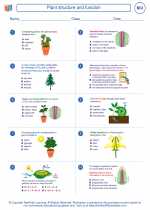State of Matter
States of matter are the distinct forms that different phases of matter take on. The three most common states of matter are solid, liquid, and gas. These states are determined by the arrangement and movement of particles in a substance.
Solid
A solid is a state of matter characterized by particles that are tightly packed together in a regular pattern. The particles vibrate in place, but do not move past each other. Solids have a definite shape and volume.
Liquid
Liquids have particles that are close together, but not as tightly packed as in a solid. The particles can move past each other, allowing liquids to flow and take the shape of their container. Liquids have a definite volume, but not a definite shape.
Gas
Gases have particles that are far apart and move freely. They have no definite shape or volume, and will expand to fill the space available to them. Gases can be compressed and have low density compared to solids and liquids.
Changes in State
Matter can change from one state to another through the processes of melting, freezing, evaporation, condensation, and sublimation. These changes involve the addition or removal of heat energy to break or form intermolecular forces between particles.
Plasma and Bose-Einstein Condensate
In addition to the three traditional states of matter, there are two other less common states: plasma and Bose-Einstein condensate. Plasma is a high-energy state of matter in which atoms are stripped of their electrons, while Bose-Einstein condensate is a state that occurs at extremely low temperatures near absolute zero.
Study Guide
- What are the three most common states of matter?
- Describe the arrangement of particles in a solid.
- How do particles in a liquid differ from those in a solid?
- Explain the behavior of particles in a gas.
- What processes are involved in changing the state of matter?
- What are plasma and Bose-Einstein condensate?
◂Biology Worksheets and Study Guides High School. Plant structure and function

 Worksheet/Answer key
Worksheet/Answer key
 Worksheet/Answer key
Worksheet/Answer key
 Worksheet/Answer key
Worksheet/Answer key
 Vocabulary/Answer key
Vocabulary/Answer key
 Vocabulary/Answer key
Vocabulary/Answer key
